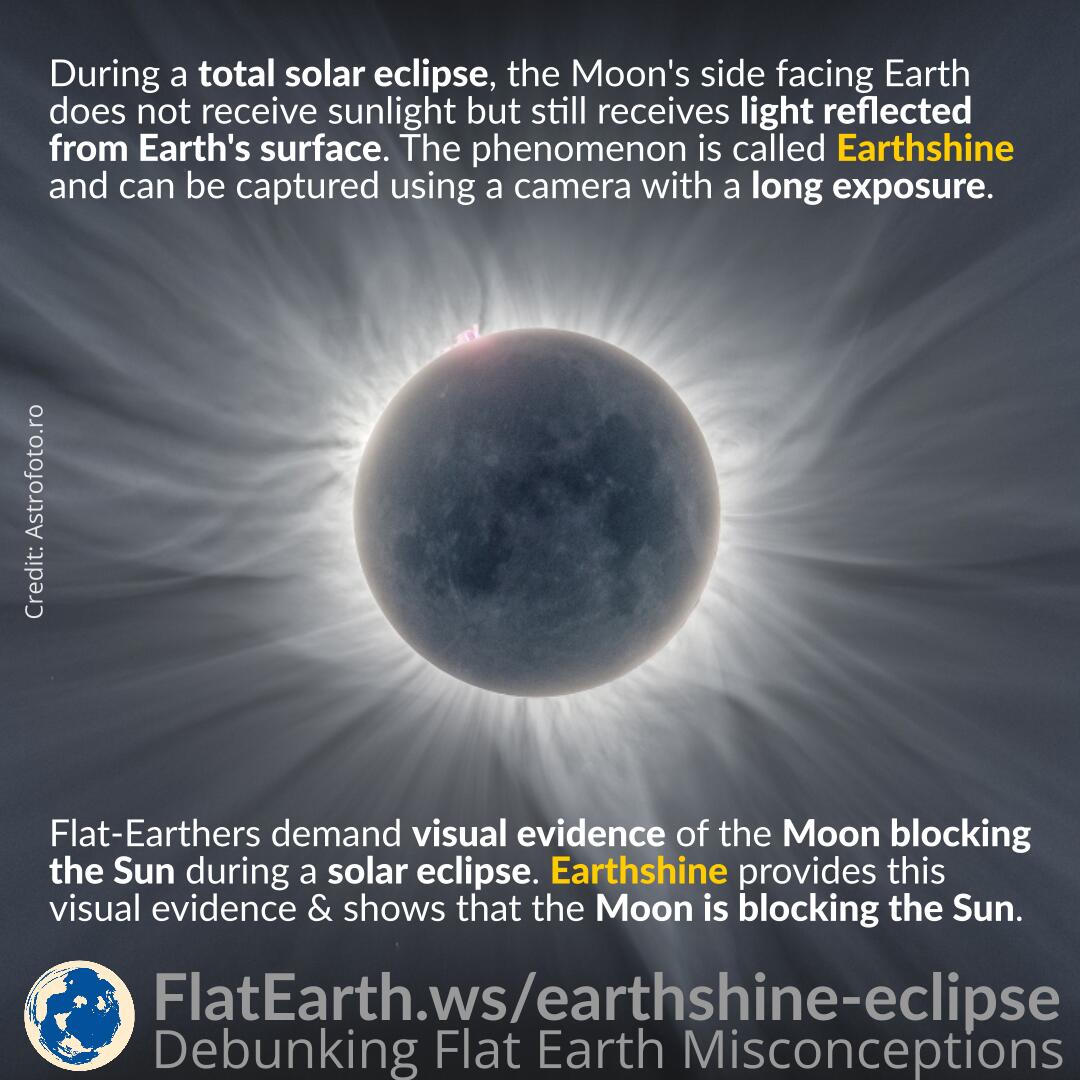During a total solar eclipse, the Moon’s side facing Earth does not receive sunlight but still receives light reflected from Earth’s surface. The phenomenon is called Earthshine and can be captured using a camera with a long exposure.
Flat-Earthers demand visual evidence of the Moon blocking the Sun during a solar eclipse. Earthshine provides this visual evidence & shows that the Moon is blocking the Sun.
Our eyes cannot observe the Earthshine directly because it is very dim, and a solar eclipse happens for a brief duration during the day. Our eyes will be already accustomed to bright daylight conditions. A total solar eclipse lasts only for a few minutes, and there is not enough time for our eyes to adapt to the sudden low-light situation.
Earthshine can be observed during a total solar eclipse using long exposure photography. The familiar figure of the Moon will be easily recognizable.
References
- An Indonesian Eclipse – AstroFoto.ro
- Earthshine, What is it? – timeanddate.com
- How to Photograph a Total Solar Eclipse – PhotographingSpace.com


